What does the marsh marigold look like and how to grow it?
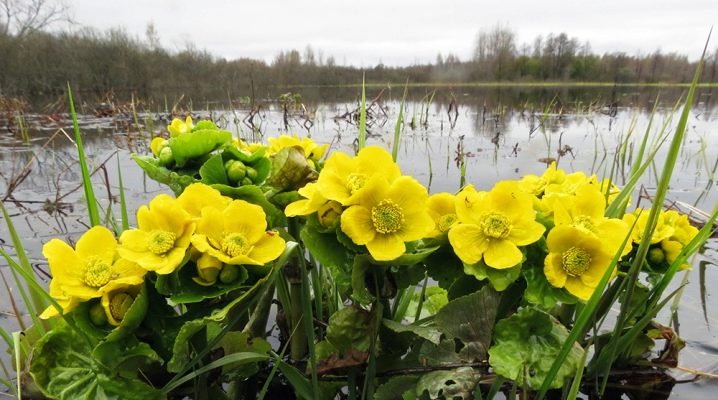
Several years ago, the marsh marigold was called the paddling pool, marsh violet or frog grass. Unflattering names do not match the appearance of the plant. Now landscape designers are actively using marigold in the design of artificial reservoirs, ponds and flower beds. Popularity is associated with early, lush and rather bright flowering. But in order to achieve this appearance, the plant must be properly cared for.
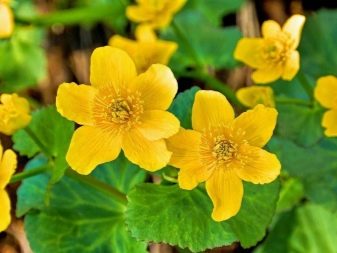
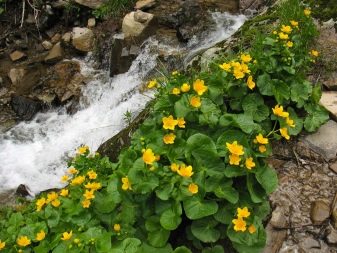
general description
Marsh marigold is a perennial herb belonging to the buttercup family. It grows wild. In nature, there are about 40 different types of marigold. Now some varieties are actively cultivated.
A characteristic feature of the marigold is its height. Most specimens reach 40 cm in size when grown in flower beds. Near water bodies, this figure increases significantly to 3 meters.
The plant does not have a particularly developed root system. The stem is fleshy, it can be either straight or creeping. The leaves are dark green, heart-shaped and jagged. On the reverse side, veins of a red-blue hue are visible. In diameter, the leaves reach 15-20 cm.
In the shade, the foliage straightens, and under the influence of the sun's rays it curls into tubes.
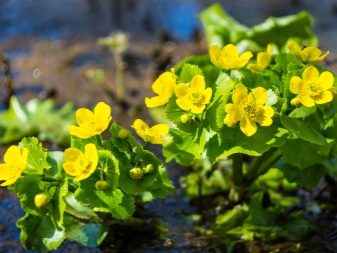

The marigold is poisonous. In nature, it grows on the territory of Russia and other countries. Most often it can be found on the banks of water bodies, but the appearance in the fields is not excluded.
The inflorescences are large enough, can reach 5 cm in diameter. Most often they are colored bright yellow. Rarer specimens are white, orange and golden. They are located both one at a time and in whole groups. The flowering period is in April and May. But the marigold will begin to bloom only 8-10 years after planting - this is the main disadvantage of the plant.
After flowers, fruits are formed that ripen in late June or early July. The fruit is multileaf with a large number of seeds.
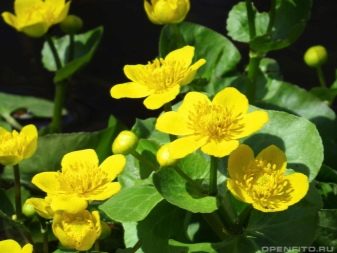

The main advantages of the plant are:
- a specific life form that ensures early flowering;
- interesting flower formula from a botanical point of view;
- bright inflorescences;
- unpretentious care;
- the ability to independently collect seeds from the fruit.
As already mentioned, not all species of marsh marigold are cultivated. In order to have a really beautiful plant on your garden plot, you need to choose it correctly.
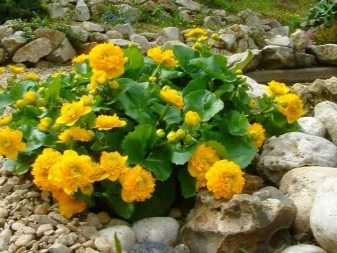

Popular species and varieties
There are about 40 types of marigold, but the following are the most popular.
- Fine-celled, or fine-petal, - a short plant, which reaches a height of no more than 35 cm. Stems are straight and smooth, green foliage about 10 cm long is located along the entire trunk. The inflorescences are small, with white petals and a bright yellow center.
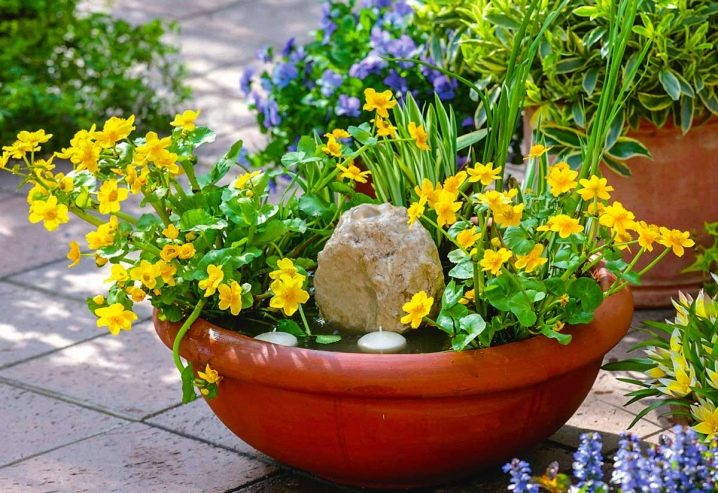
- Floating - occurs mainly in water bodies. The inflorescences are white, up to 4 cm in diameter. It is this species that is best suited for the decoration of ponds and other reservoirs.
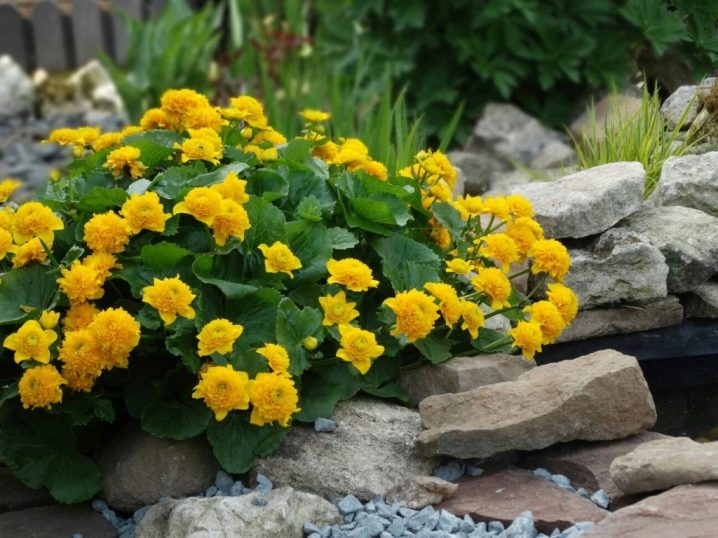
- Membranous - is distinguished by an abundance of small inflorescences of bright yellow color. The leaves are dark green, rather large.
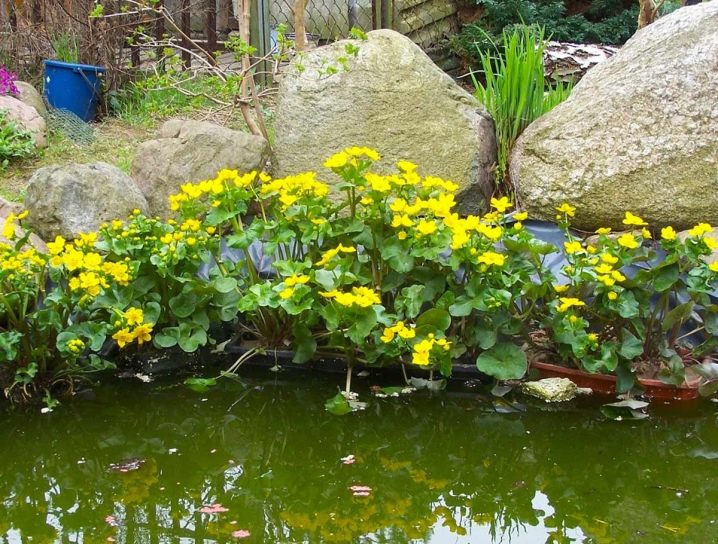
- Swamp terry - most popular with gardeners and landscape designers. The bush is undersized, spherical in shape.The flowers are large enough, multi-petal, painted in bright yellow. Foxes are rounded-heart-shaped, rarely more than 10 cm long. The flowering period is in May. The plant prefers shaded areas with sufficiently moist soil.
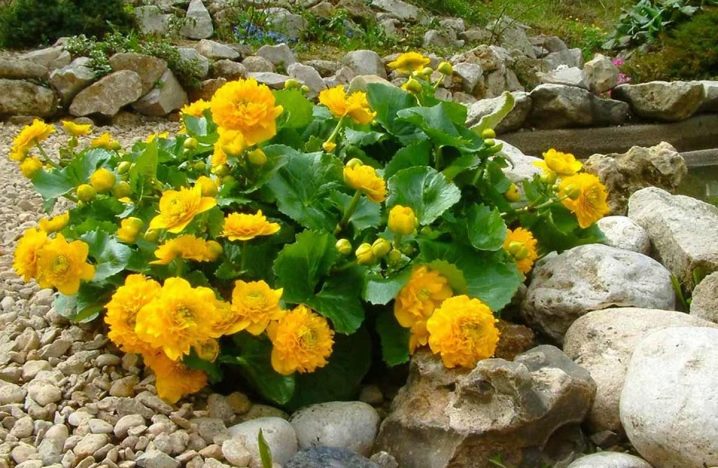
- Alba - an attractive perennial that does not require special care. Inflorescences are small, have white petals and yellow centers.
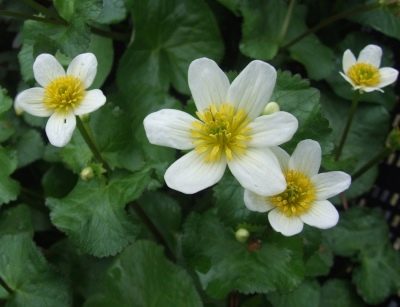
These are only the most popular types of marigold. The marsh squat, many-petal, marsh lush, white, fisty and some others are cultivated.
Planting and leaving
For the cultivation of any type of marsh marigold, it is not required to create any specific conditions. Shady areas are best suited for cultivation. With regular exposure to sunlight, the marigold will develop slowly and look dull.
It can be planted both through seedlings and in open ground. Seedlings are sown in mid-February, and they can be planted in open ground as soon as the first snow melts and a normal temperature settles.
As a care, the marigold requires the following activities.
- Moderately abundant watering. Here it is important to focus on the weather conditions (the duration of the rains), as well as on the external condition of the marigold itself. With a lack of moisture, the leaves first of all suffer: they look unviable, lose their bright green color, and become less elastic. Species that are planted near water bodies need to be watered extremely rarely.
- Weeding is required as the flower bed is overgrown with weeds.
- Sometimes you need to loosen the soil.

The plant practically does not need feeding. Sometimes you can add humus or rotted manure. The marigold belongs to the category of hardy plants, therefore it is rarely attacked by any diseases and pests.
Reproduction
Kaluzhnitsa is a herbaceous perennial intended for outdoor cultivation. There are two methods of reproduction: seed and vegetative method. If we talk about the second option, then it means both grafting and dividing the bush.
The division can be carried out in the spring, before the formation of inflorescences on the marigold. You can also carry out the procedure in the fall, but it is important to be in time before the onset of the first frost. To do everything right, the bushes must be dug up, divided into parts and planted in different holes. The distance between them should be at least 30-40 cm.
In general, the marigold tolerates transplantation well. After that, it must be well watered and avoid intense exposure to sunlight.
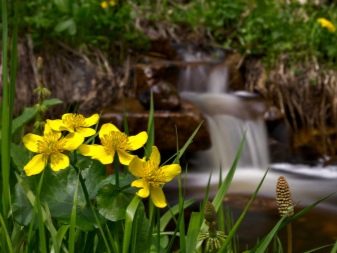
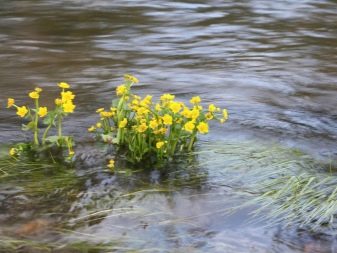
What plants can be planted with?
Kaluzhnitsa gets along well in flower beds with other plants. The only condition that should be observed is to plant it with ornamental plants that require identical keeping conditions. Simply put, if some flowers do not tolerate a large amount of moisture, then the marigold will be uncomfortable with them in the same flower bed.
Outwardly, it is combined with Alpine forget-me-not, astilba, ostrich, bergenia and lungwort. This should be taken into account when decorating flower beds in a personal plot.
Most often, marigold is planted along the coastline of the reservoirs available on the territory. The plant thrives there, as it can consume a sufficient amount of moisture. Other plants and shrubs can be used as shading. But they need to be planted in such a way that they do not harm and do not clog the marigold with their shoots.
In the garden, you can organize whole compositions with the participation of marsh marigold. The most successful examples of the use of a plant in landscape design are presented in the photographs.
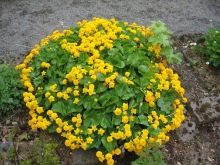
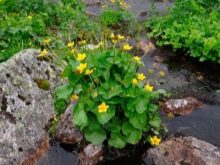
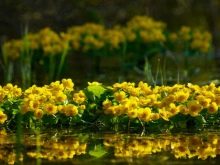
Application in traditional medicine
Despite the insignificant toxicity, the plant is used as a component for the preparation of medicines from the category of traditional medicine.A decoction and infusion of marigold leaves are used for various diseases, which include metabolic disorders, anemia, bronchitis of any origin, diseases of the genitourinary system, jaundice and colds.
Application is possible only with proper collection and subsequent storage of the herb. The aerial part is recommended to be harvested during the active flowering period. Leaves and flowers need to be dried a little. To do this, they are laid out on a flat surface and left in a darkened ventilated room. In order for them to dry evenly, periodically they need to be turned over.
The second way is to use a special dryer or oven. If this method is chosen, then drying should be carried out at a temperature in the range from 50 to 60 degrees Celsius.
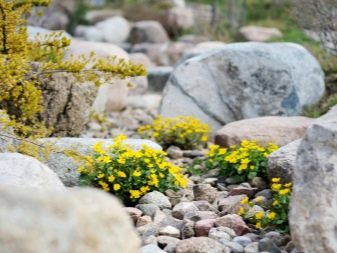
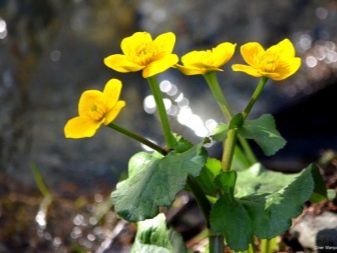
In order to use the roots, they must be removed from the ground in the fall, when the marigold has faded. The roots must be thoroughly washed, cut into small pieces and also dried in the oven at the same temperature.
Grass or root pieces should be kept in natural cloth bags. Expiration date - no more than 24 months. After this time, unused fees are recommended to be thrown away. Despite its active and proven efficacy, marigold can only be taken after consulting your doctor. Self-medication is unsafe for life and health.
It is possible to grow a marsh marigold in your personal plot for both beauty and benefit. The most important thing is to choose the right place of deployment, as well as to provide timely care.
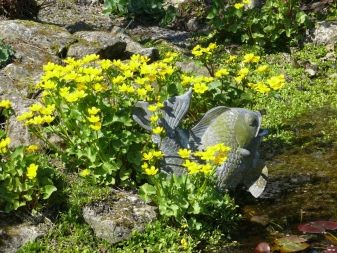
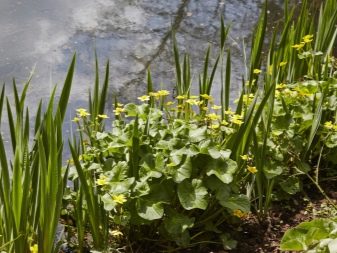













The comment was sent successfully.